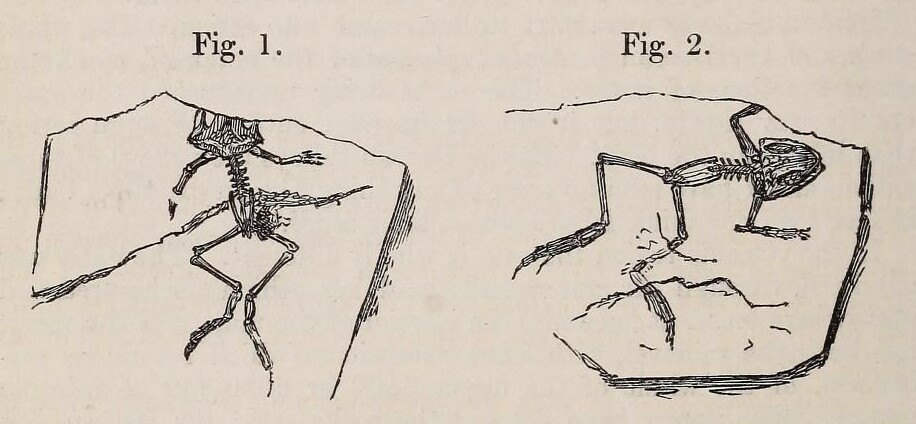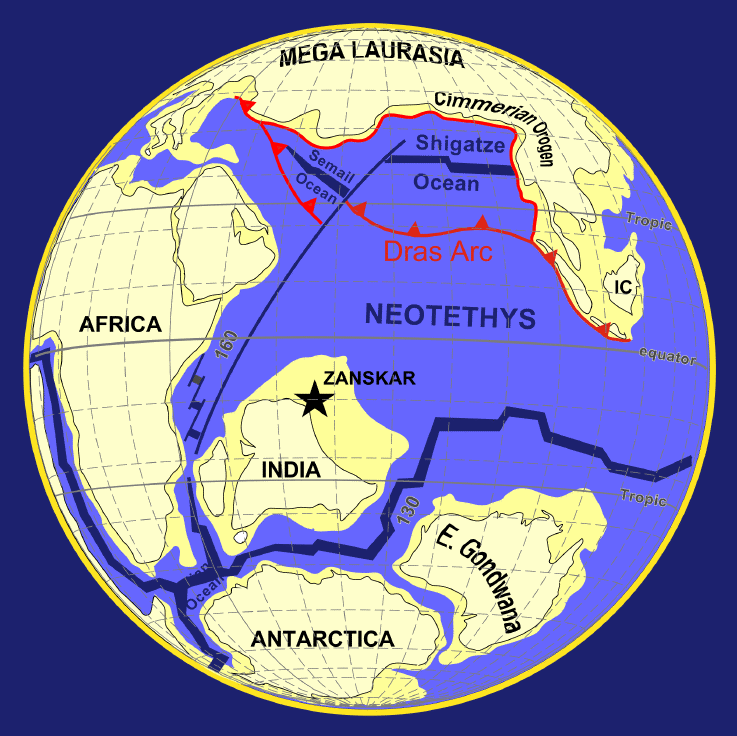|
Deccansaurus
''Deccansaurus'' ("Deccan Traps lizard") is an extinct genus of scincomorphan (potentially a stem- cordyliform) lizard from the latest Cretaceous or earliest Paleocene of India. A single species is known, ''D. paleoindicus'', represented by jaws and some osteoderm fragments from the Intertrappean Beds of the Dhar district in Madhya Pradesh. The morphology of ''Deccansaurus'' suggests that it was a distant relative of modern skinks. In addition, it shares close similarities with members of the clade Cordyliformes (represented in the modern day by Cordylidae and Gerrhosauridae from mainland Africa and Madagascar), which would potentially mark the first occurrence of this group from the Indian subcontinent The Indian subcontinent is a physiographic region of Asia below the Himalayas which projects into the Indian Ocean between the Bay of Bengal to the east and the Arabian Sea to the west. It is now divided between Bangladesh, India, and Pakista ..., which at the time was an ... [...More Info...] [...Related Items...] OR: [Wikipedia] [Google] [Baidu] |
Intertrappean Beds
The Intertrappean Beds are a Late Cretaceous and early Paleogene geologic unit in India. These beds are found as interbeds between Deccan Traps layers, including the slightly older Lameta Formation. They consist a number of different subgroups and formations, and span the Cretaceous–Paleogene boundary. Many mostly fragmentary fossils, especially of small vertebrates, are known from the formation. Indeterminate theropod and pterosaur remains have been recovered from the formation, as well as dinosaur eggs.Weishampel, et al. (2004). "Dinosaur distribution." Pp. 517-607. The mammal genera '' Deccanolestes'', '' Sahnitherium'', '' Bharattherium'', '' Indoclemensia, Indotriconodon'' and'' Kharmerungulatum'' have been recovered from several localities. The Early Eocene-aged Bamanbor locality in Gujarat preserves articulated freshwater fish specimens. A rich plant flora is known from the formation. Stratigraphy Although often thought of as a contemporaneous unit that was for ... [...More Info...] [...Related Items...] OR: [Wikipedia] [Google] [Baidu] |
Scincomorpha
Scincomorpha is an infraorder and clade of lizards including skinks (Scincidae) and their close relatives. These include the living families Cordylidae (girdled lizards), Gerrhosauridae (plated lizards), and Xantusiidae (night lizards), as well as many extinct taxa. Other roughly equivalent terms include the suborder Scinciformata, or the Superfamily (taxonomy), superfamily Scincoidea, though different authors use these terms in a broader or more restricted usage relative to true skinks. They first appear in the fossil record about 170 million years ago, during the Jurassic period.Evans, S.E. and Jones, M.E.H. (2010). "The Origin, Early History and Diversification of Lepidosauromorph Reptiles," pp. 27-44 in Bandyopadhyay, S. (ed.), ''New Aspects of Mesozoic Biodiversity'', 27 Lecture Notes in Earth Sciences 132./ref> Alifanov (2016) found the following phylogeny with morphological data: Alternatively, Zheng & Wiens (2016) found the following phylogeny of extant groups using mol ... [...More Info...] [...Related Items...] OR: [Wikipedia] [Google] [Baidu] |
Madhya Pradesh
Madhya Pradesh (; ; ) is a state in central India. Its capital is Bhopal and the largest city is Indore, Indore. Other major cities includes Gwalior, Jabalpur, and Sagar, Madhya Pradesh, Sagar. Madhya Pradesh is the List of states and union territories of India by area, second largest Indian state by area and the List of states and union territories of India by population, fifth largest state by population with over 72 million residents. It borders the states of Rajasthan to the northwest, Uttar Pradesh to the northeast, Chhattisgarh to the east, Maharashtra to the south, Gujarat to the west. The area covered by the present-day Madhya Pradesh includes the area of the ancient Avanti (India), Avanti Mahajanapada, whose capital Ujjain (also known as Avantika) arose as a major city during the second wave of Indian urbanisation in the sixth century BCE. Subsequently, the region was ruled by the major dynasties of India. The Maratha Confederacy, Maratha Empire dominated the maj ... [...More Info...] [...Related Items...] OR: [Wikipedia] [Google] [Baidu] |
Cretaceous Lizards
The Cretaceous ( ) is a geological period that lasted from about 143.1 to 66 million years ago (Mya). It is the third and final period of the Mesozoic Era, as well as the longest. At around 77.1 million years, it is the ninth and longest geological period of the entire Phanerozoic. The name is derived from the Latin , 'chalk', which is abundant in the latter half of the period. It is usually abbreviated K, for its German translation . The Cretaceous was a period with a relatively warm climate, resulting in high eustatic sea levels that created numerous shallow inland seas. These oceans and seas were populated with now-extinct marine reptiles, ammonites, and rudists, while dinosaurs continued to dominate on land. The world was largely ice-free, although there is some evidence of brief periods of glaciation during the cooler first half, and forests extended to the poles. Many of the dominant taxonomic groups present in modern times can be ultimately traced back to origins in the ... [...More Info...] [...Related Items...] OR: [Wikipedia] [Google] [Baidu] |
Insular India
Insular India was an isolated landmass which became the Indian subcontinent. Across the latter stages of the Cretaceous and most of the Paleocene, following the breakup of Gondwana, the Indian subcontinent remained an isolated landmass as the Indian Plate drifted across the Tethys Ocean, forming the Indian Ocean. The process of India's separation from Madagascar first began 88 million years ago, but complete isolation only occurred towards the end of the Maastrichtian, a process that has been suggested to be the creation of the Deccan Traps. Soon after, the land mass moved northward rather quickly, until contact with Asia was established 55 million years ago. Even then, both landmasses did not become fully united until around 35 million years ago, and periods of isolation occurred as recently as 24 million years ago. Thus, for a period of 53 million years India retained a degree of isolation, 11 of which it was a complete island continent. This allowed ... [...More Info...] [...Related Items...] OR: [Wikipedia] [Google] [Baidu] |
Indian Subcontinent
The Indian subcontinent is a physiographic region of Asia below the Himalayas which projects into the Indian Ocean between the Bay of Bengal to the east and the Arabian Sea to the west. It is now divided between Bangladesh, India, and Pakistan. (subscription required) Although the terms "Indian subcontinent" and "South Asia" are often also used interchangeably to denote a wider region which includes, in addition, Bhutan, the Maldives, Nepal and Sri Lanka, the "Indian subcontinent" is more of a geophysical term, whereas "South Asia" is more geopolitical. "South Asia" frequently also includes Afghanistan, which is not considered part of the subcontinent even in extended usage.Jim Norwine & Alfonso González, ''The Third World: states of mind and being'', pages 209, Taylor & Francis, 1988, Quote: ""The term "South Asia" also signifies the Indian Subcontinent""Raj S. Bhopal, ''Ethnicity, race, and health in multicultural societies'', pages 33, Oxford University Press, 2007, ; Q ... [...More Info...] [...Related Items...] OR: [Wikipedia] [Google] [Baidu] |
Madagascar
Madagascar, officially the Republic of Madagascar, is an island country that includes the island of Madagascar and numerous smaller peripheral islands. Lying off the southeastern coast of Africa, it is the world's List of islands by area, fourth largest island, the List of island countries, second-largest island country, and the List of countries and dependencies by area, 46th largest country overall. Its capital and List of cities in Madagascar, largest city is Antananarivo. Following the prehistoric breakup of the supercontinent Gondwana, Madagascar split from Africa during the Early Jurassic period, around 180 million years ago, and separated from the Indian subcontinent approximately 90 million years ago. This isolation allowed native plants and animals to evolve in relative seclusion; as a result, Madagascar is a biodiversity hotspot and one of the world's 17 megadiverse countries, with over 90% of its wildlife of Madagascar, wildlife being endemic. The island has ... [...More Info...] [...Related Items...] OR: [Wikipedia] [Google] [Baidu] |
Africa
Africa is the world's second-largest and second-most populous continent after Asia. At about 30.3 million km2 (11.7 million square miles) including adjacent islands, it covers 20% of Earth's land area and 6% of its total surface area.Sayre, April Pulley (1999), ''Africa'', Twenty-First Century Books. . With nearly billion people as of , it accounts for about of the world's human population. Demographics of Africa, Africa's population is the youngest among all the continents; the median age in 2012 was 19.7, when the worldwide median age was 30.4. Based on 2024 projections, Africa's population will exceed 3.8 billion people by 2100. Africa is the least wealthy inhabited continent per capita and second-least wealthy by total wealth, ahead of Oceania. Scholars have attributed this to different factors including Geography of Africa, geography, Climate of Africa, climate, corruption, Scramble for Africa, colonialism, the Cold War, and neocolonialism. Despite this lo ... [...More Info...] [...Related Items...] OR: [Wikipedia] [Google] [Baidu] |
Gerrhosauridae
The Gerrhosauridae are a family of lizards native to Africa and Madagascar. They are close relatives of skinks and were once classified in the same family as them. Habitat Also known as plated lizards, species in the family Gerrhosauridae live in a range of habitats, from rocky crevices to sand dunes. Description Their form is variable, some species having four fully developed limbs, and others having vestigial hind limbs only. Reproduction Most species are believed to be oviparous. Classification Family Gerrhosauridae *Subfamily Gerrhosaurinae **Genus '' Broadleysaurus'' - rough-scaled plated lizard (1 species) **Genus '' Cordylosaurus'' - blue-black plated lizard (1 species) **Genus '' Gerrhosaurus'' - (7 species) **Genus '' Matobosaurus'' - (2 species) **Genus '' Tetradactylus'' - (8 species) *Subfamily Zonosaurinae **Genus '' Tracheloptychus'' - keeled plated lizards (2 species) **Genus ''Zonosaurus'' - zonosaurs (17 species) References Further reading * Boulenger GA (1 ... [...More Info...] [...Related Items...] OR: [Wikipedia] [Google] [Baidu] |




